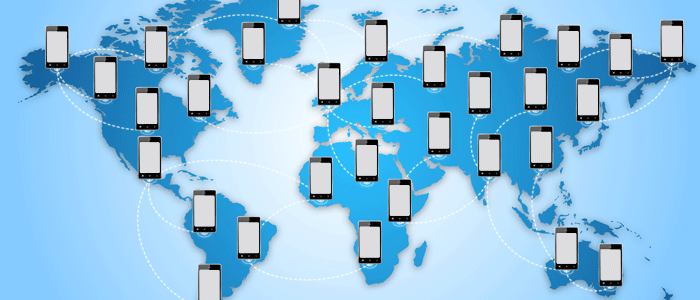I’m not sure the debate between mobile apps or mobile web advertising dominance will be settled anytime soon. Both platforms provide separate and valuable use cases for advertisers throughout different points of their conversion funnels. Both have significant volumes of users that cannot be ignored but at MediaMath, we see slightly more in-app bid requests than we do mobile web. The numbers do not yet show a major discrepancy one way or another.
The bottom line is that advertisers can no longer chose to ignore in-app opportunities. But how do advertisers successfully target users inside of mobile apps? This presents a fairly unique problem as users are not identified by a cookie inside of an app. Instead, users are identified by a device identifier, which to the dismay of advertisers, does not exist in mobile web. This creates a few unique problems. The first, is that it can be tricky to link users on the same device between their app activity and their mobile web activity. The second, and the problem we’ll discuss here, is how do you go about effectively targeting users in apps?
App ID Targeting
The most obvious form of targeting users in apps would be to target a specific set of apps, identified by the app/bundle ID. This works well, provided you know what apps you’d like to serve on. This is a very similar approach to how many advertisers today selectively define the websites they’d like to display ads on or conversely, which sites they would like to not display ads on. This concept of white/blacklisting app IDs is a widely applied tactic in targeting mobile app users.
The obvious benefit with app ID targeting is the granularity and control it provides marketers to make sure that they are only messaging users inside desired apps that are perhaps on brand, or represent similar intent or demographic profiles to users they want to reach. One of the downsides of this mechanism is that it can be difficult to curate a wide enough list of apps, gather the individual app IDs across multiple platforms (iOS, Android, etc.) to achieve the desired scale of a campaign. Leveraging a contextual targeting solution here for apps may help alleviate this issue.
All things considered, App ID targeting is an excellent way to target a group of apps, but it should not be considered the be-all and end-all of app targeting.
Contextual App Targeting
Contextual targeting has proved to be an incredibly effective mechanism for display based advertising as it provides marketers with the ability to target certain categories or classifications of content. In theory, this allowed all sites to be considered eligible to have an ad served, provided they meet the content or classification criteria originally defined. MediaMath is excited to expand its contextual targeting offering to mobile apps. This allows marketers to target apps by any of the following:
- Content Advisory Rating
- App Category
- Popularity
- Price
- Top Ranked Apps
- User Rating
For marketers who understand the types of apps their intended audience uses, this provides a much simpler and perhaps “turn key” approach to targeting apps (and the users who engage with them).
Obviously, the downside here is the lack of granularity you have over specific apps. However, by combining contextual app targeting with a blacklist of app IDs, marketers begin to have fine grained control of app targeting, while leveraging an entire category or classification of mobile apps. Both app ID targeting and contextual app targeting provide marketers — who want to target all users who engage with certain apps — powerful tools to reach users. But what about reaching mobile in-app users based on profiles, personas or demographic data?
Mobile App Audiences
How much can you tell about an individual by the apps installed on their phone? Turns out — a lot. MediaMath has partnered with PushSpring to provide targetable segments of users based on the apps installed on a device. For example, say if you are targeting a fitness enthusiast, this can result in targeting a user who has workout apps, gym apps and calorie tracking apps installed on their device. As a result, marketers have a more holistic understanding of users and who they want to target.
If a marketer wants to target frequent travelers, they could target the entire category of travel apps, however that does not infer anything about the user except they may be currently traveling and consequently engaging with a specific travel app. However, if a user has several travel apps installed on their phone, regardless of what app they may be currently using (travel or not), PushSpring targets the device identifier and not the app itself, so a user can be served an ad in any app they engage with.
PushSpring provides targeting by the following:
- Apps Owned by Genre
- Demographic
- Intent
- Interest and Activity
- Life Stage
PushSpring can also create custom segments based on apps, installed to allow marketers even more powerful and custom segments to identify and reach users who may fit a conquesting model, or a non standard user profile/persona.
This type of audience targeting provides another mechanism leveraging app targeting. While the PushSpring offering is technically an audience (i.e. a pool of device IDs) the audiences are created using information about apps installed on a single device, which provide strong intent and often demographic signals.
Putting It All Together
There is no sure fire, one size fits all mechanism for app targeting. But there are certainly several different tactics to leverage apps to reach consumers. Marketers can layer several of these tactics on top of each other to provide an incredibly custom and powerful solution, or run with any single one of these tactics on their own.









